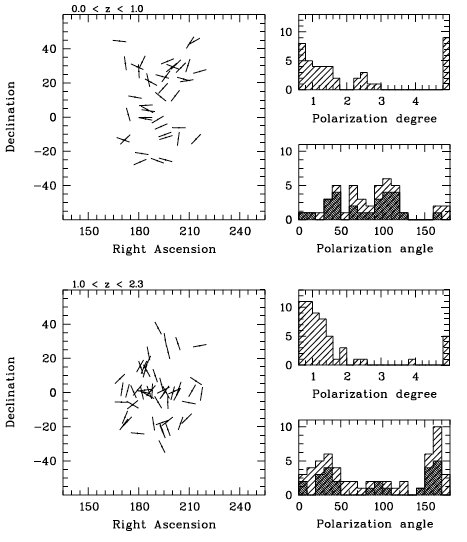I worked on the determination of the optical polarisation properties of about 200 quasars, increasing by more than 30% the number of quasars with measured optical polarisation (Sluse et al. 2005). I also tracked systematic errors that could contaminate the measurement of the intrinsic polarisation degree of the quasars (such as polarisation produced by aligned dust in our galaxy). This work enabled us (Hutsemékers et al. 2005) to confirm the existence of a correlated orientation of the polarisation vector quasars over scales of 1 Gpc and to characterise the properties of this effect. This surprising effect was thought to be caused by weak interactions between dark matter and polarised light. However, we obtained for the first time systematic circular polarisation measurements for about 20 objects (Hutsemékers et al. 2010). The low level of circular polarisation (generally V < 0.05 %) observed in those objects disfavours the above-mentioned scenario, at least in its simplest formulation.

Maps of quasar polarization vectors in the North Galactic Pole region, together with the corresponding distributions of polarisation degree and angle (Hutsemékers, Cabanac, Lamy et Sluse 2005).
More recently, I have performed the first ground-based measurement of the optical polarisation of the individual images of a lensed quasar, i.e. H1413+117, in imaging (Hutsemékers et al. 2010) and spectropolarimetric mode (in. prep). These new data enabled us to show that the polarisation degree (and angle) of the most microlensed image is different from the one of the other images, suggesting that microlensing affects the scattering region where the quasar intrinsic polarization is produced.
